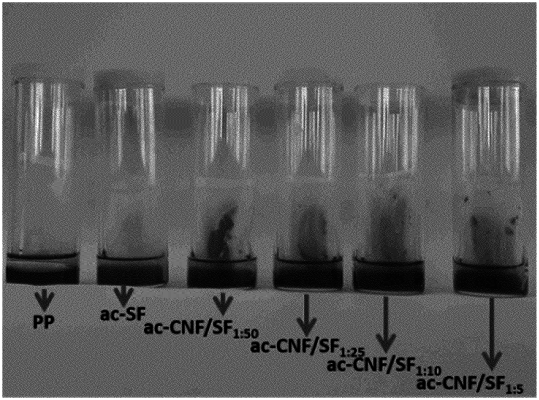| CPC C02F 1/288 (2013.01) [C08J 3/2053 (2013.01); C08J 11/26 (2013.01); C08K 7/04 (2013.01); C02F 2101/322 (2013.01); C02F 2101/325 (2013.01); C02F 2101/327 (2013.01); C02F 2305/08 (2013.01); C08J 2325/06 (2013.01); C08K 3/04 (2013.01)] | 20 Claims |

|
1. A method for purifying an aqueous solution, the method comprising:
passing the aqueous solution, comprising a hydrophobic organic substance, over or through a surface comprising a polystyrene-carbon nanofiber (CNF) composition, thereby producing an aqueous product comprising less of the hydrophobic organic substance,
wherein a polystyrene of the polystyrene-CNF comprises post-consumer waste collapsed polystyrene foam,
wherein a CNF of the polystyrene-CNF is associated with the polystyrene by sonicating a mixture of the CNF and the polystyrene in softened or collapsed form,
wherein the post-consumer waste polystyrene is contaminated with sugar, starch, protein, nucleic acid, lipid, other food component, paint, ink, dye paper, or non-polystyrene plastic contaminant, in a range of from 0.001 and 5 wt. %.
|